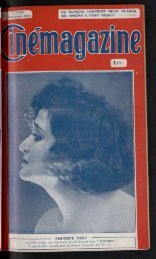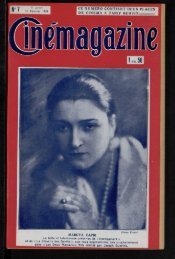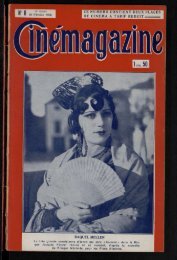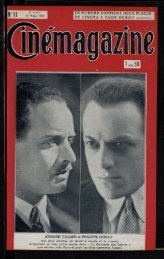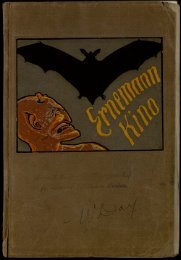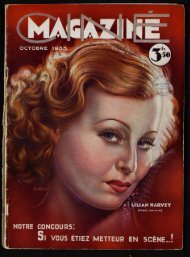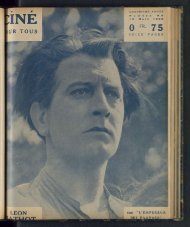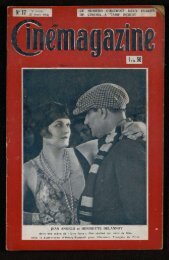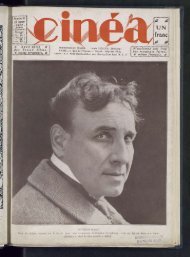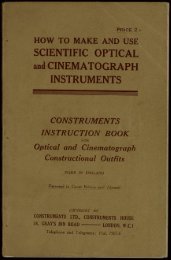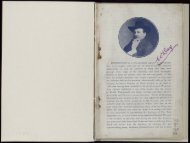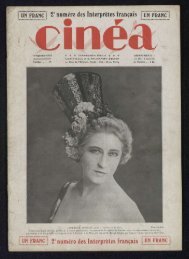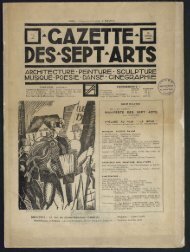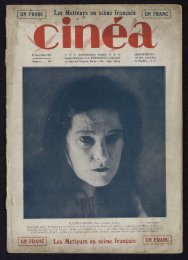Untitled
Untitled
Untitled
Create successful ePaper yourself
Turn your PDF publications into a flip-book with our unique Google optimized e-Paper software.
50 MODERN MAGIC LANTERNS.<br />
lamp are marked + A and A res ctively, the current is<br />
taken from the two terminals + B andB; C is the switch,<br />
D the resistance, and E the arc. A variable resistance is<br />
shown in the figure, but if a suitable amount of resistance<br />
is introduced, the power of varying it is not required, at<br />
any rate under ordinary circumstances.<br />
The most suitable wires for use with the lantern are<br />
what are known as twin silk-covered flexible, in which the<br />
two are insulated with rubber and silk, and twisted together.<br />
Each main wire or lead is made up of a bundle of fine wires<br />
to give the whole flexibility; for the lamps usually em loyed<br />
in the lantern, each lead should have a carrying capacity<br />
equal to a solid wire of 4 B.W.G.<br />
CHAPTER IX.<br />
Zbe 'lantern 1,6obp.<br />
THE various illuminants for use in the lantern having<br />
been considered, the body of the lantern, which is required<br />
to cut off all stray light which would otherwise reach the<br />
screen or the eyes of the audience, and which serves to hold<br />
the various parts in their relative positions, next demands<br />
attention.<br />
In the case of oil lamps, the body is sometimes a part<br />
and parcel of the lamp itself, but more often is a metal<br />
case in which the lamp slides. The best material for the<br />
purpose is Russian iron for the box portion, A B, Fig. 1,<br />
and brass for the tubes H H, which carry the lens. In<br />
lamps of the type of that shown in Fig. 6, the lamp itself<br />
carries its chimney, which emerges through a hole in<br />
the top of the lantern, and the body of the lantern is<br />
brought down nearer to the lamp and so made more compact.<br />
For dissolving views with petroleum lamps, the two lanterns<br />
are placed side by side. The better class of instruments in<br />
which oil lamps are used, have bodies made of mahogany<br />
with brass fronts, and are fitted so that the lamp can be<br />
drawn out, and the usual tray and jet substituted when limelight<br />
is required. In such a case the lantern should have<br />
an inner lining of iron separated from the woodwork by an<br />
air space, to prevent the wood from getting hot.<br />
Lanterns for limelight and for the electric arc should<br />
always be made in this way. They should be provided<br />
with a door on both sides as well as an opening at the<br />
D2<br />
711



